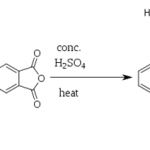On December 13, 2021, Lok Sabha passed the Narcotic Drugs and Psychotropic Substances (Amendment) Bill, 2021. About the 2021 Amendment 2021 Bill amends the Narcotic Drugs and Psychotropic Substances Act, 1985. It seeks to rectify a drafting anomaly, which was created by a 2014 amendment to the parent legislation. Amendment comprises of a legislative declaration about what […]
Forensic Chemistry
Introduction to Forensic Chemistry
Forensic Chemistry is a branch of chemistry that involves the application of chemical concepts to solve crimes. Forensic chemistry is the application to analyze any non-biological materials found at a crime scene, and figure out how they connect to the person who committed the crime. It must determines the chemical makeup of the material and discover where […]
Commonly used Reagents in Forensic Chemistry Laboratory
In this post, we have tried to compile most of the frequently and commonly used reagents in our Forensic Chemistry Laboratories. So, it is important to have the basic information on how to make these reagents and their usage to detect or distinguish the drugs in question. Let us take a look at the commonly […]
Forensic Analysis of Chemicals in Trap Cases – Part 2
In part 1 of this topic we talked about Phenolphthalein, a commonly used chemical in trap cases, in great length. In the part 2 of Forensic Analysis of Chemicals in Trap Cases, we will study about another powder, Anthracene, that is used in trap cases. We will also see some of the legal aspects and […]
Analysis of Drug of Abuse : Barbiturates
In the preceding post, we read about barbiturates, its properties, synthesis of barbiturates, classification, mechanism of action, uses, signs and symptoms and how the samples are packed at scene of crime. In this post, we will look at the Qualitative and Quantitative tests performed in the analysis of barbiturates . Before we start discussing the […]
Forensic Analysis of Chemicals in Trap Cases – Part 1
A trap is a method of deliberate laying of the bait and catch the accused person red handed. ‘Bribery’is a term used for any act of giving gift or money, with dishonest nature for altering its recipient‘s behavior. Bribery is an offence and may be defined as the offering, giving,receiving or soliciting of any valuable item […]





